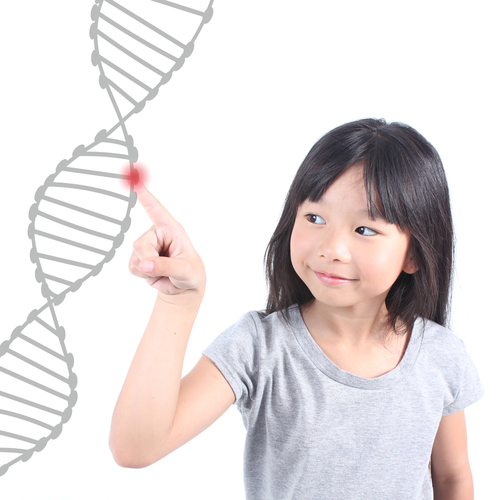Three IL4R Gene Mutations Identified as Risk Factors for MG Among Chinese Han

Mutations in the genetic sequence of the IL4R gene can increase the risk of myasthenia gravis in the Chinese Han population, the world’s largest ethnic group, researchers reported.
The finding was part of the study “IL-4Rα Polymorphism Is Associated With Myasthenia Gravis in Chinese Han Population” in the journal Frontiers in Neurology.
Interleukin-4 is an important signaling molecule that promotes, through its receptor IL4R, the growth and differentiation of immune B-cells known to be involved in myasthenia gravis. While its immune-activating role has been widely explored, little is known about its involvement in the development of this rare autoimmune disorder.
Chinese researchers evaluated whether mutations, also known as gene variants, in the sequence of IL4R could contribute to increased disease susceptibility and severity of myasthenia gravis.
They recruited 480 patients with myasthenia gravis and 487 healthy volunteers at the Affiliated Hospital of Qingdao University and Beijing Friendship Hospital, Capital Medical University. All were of Han Chinese origin.
Among the patients, 107 had a thymoma (overgrowth of the thymus); 338 were positive for anti-AChR autoantibodies, and 135 had generalized manifestation of the disease. Seventy-one were classified as having juvenile onset myasthenia gravis (ages 15-50); 409 had adult onset disease (older than 50).
Blood samples were used to look for variants of the IL4R gene.
The researchers found that a variant identified as rs1801275 was more frequent in myasthenia gravis patients than in the healthy control group. The presence of a guanine (G) DNA base (one of the four building blocks of DNA) instead of the naturally existing adenine (A) was linked to a 1.29 times higher risk of having the disease.
Further analysis revealed that two other variants, identified as rs2107356 and rs1805010, were also more frequently found among patients.
The presence of a thymine (T) in the rs2107356 variant and of an adenine (A) in the rs1805010 were more frequent among patients in those with thymomas.
In addition, a guanine (G) in the rs1801275 variant was frequently found more frequently among in patients positive for anti-AChR autoantibodies who did not have a thymoma. This genetic alteration was also more frequently often present among in patients with early onset and late onset disease, as well as with eye-related and generalized manifestations, as compared to healthy individuals.
Overall, the presence of rs2107356 and rs1805010 IL4R gene variants were found to be contributing risk factors for the development of thymomas, whereas rs1801275 was associated with a 1.67 times higher risk of being AChR-positive.
But IL4R mutations were found not to be predictive of the severity of myasthenia gravis.
Supported by these findings, the researchers concluded that genetic variations of IL4R mutations are “associated with the susceptibility of myasthenia gravis in Chinese Han population.”
Because the study did not include patients with thymomas but without myasthenia gravis, the researchers noted that additional studies are warranted to further evaluate the involvement of IL4R in thymoma development.
The IL4R mutations were found not to be predictive of the severity of myasthenia gravis.
Supported by these findings, the researchers concluded that genetic variations of IL4R are “associated with the susceptibility of myasthenia gravis in Chinese Han population.”






